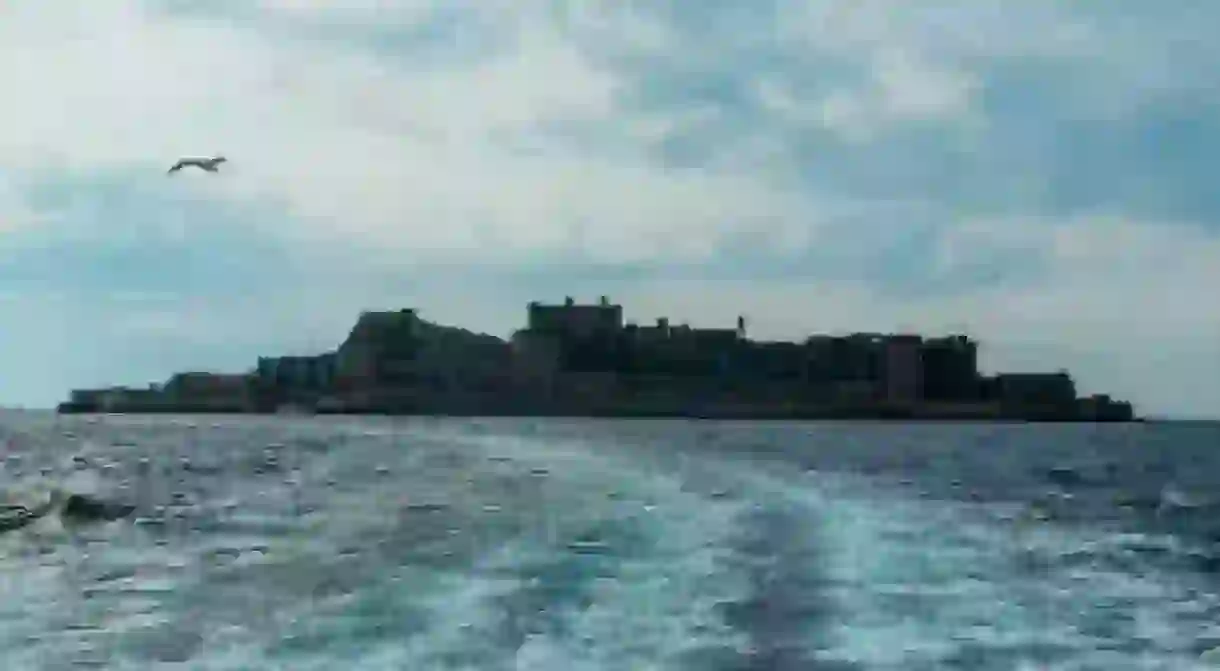Japan's Hidden Jewels: The Abandoned Island of Hashima

15 kilometers off the southern coast of Nagasaki, south Japan, amongst a scattering of small islets wasting away in the ocean, is the skeletal island of Hashima. A coal-mining site during the Meiji Restoration – a period of increased industrialisation that restored economic prosperity to Japan at the end of the 19th century – Hashima has since been completely abandoned. All that remains of the once thriving site, are the crumbling bones of deserted buildings.

15 kilometers off the southern coast of Nagasaki, south Japan, amongst a scattering of small islets wasting away in the ocean, is the skeletal island of Hashima. A coal-mining site during the Meiji Restoration – a period of increased industrialisation that restored economic prosperity to Japan at the end of the 19th century – Hashima has since been completely abandoned. All that remains of the once thriving site, are the crumbling bones of deserted buildings.It is hard to believe, but this remote, eerie ghost-town was in fact once one of the most densely populated places to have ever existed. Its 61 000 square meters of land, the perimeter of which roughly resembles a large boat (hence its common moniker Gunkanjima, meaning battleship in Japanese), once housed approximately 5259 people.

The large majority of these residents worked on the island’s coal mines – the productivity of which reached its peak at the turn of the century, during the industrialisation of Japan. Mitsubishi, who had purchased Hashima in 1890, initiated the planning and construction of a number of high-rise apartment blocks to accommodate its rapidly-increasing workforce – many of whom were employed from Japan’s various overseas colonies. Though by the 1930s, it was mostly Korean and Chinese prisoners of war who operated the mines under forced labour.

Throughout the course of the century, as petroleum gradually replaced coal as a source of energy, mines across Japan began to slow their operations, one by one shutting down completely. It was in 1974 that Mitsubishi announced the ceasing of Hashima’s operations. The island was very quickly deserted. So quickly in fact, that residents left a number of personal possessions behind them – ghostly relics of Gunkanjima’s bygone days that can still be found scattered about the island.

For decades, Hashima lay abandoned and forgotten in the Sea of Japan, during which time its infrastructure inevitably began to crumble and decay, imbuing the island with a certain charm and an eerie, ethereal beauty which would serve to revive interest in former mining site at the turn of the millennium. The authorities of the Nagasaki Prefecture (of which it is officially a part) were persuaded to re-open and restore the site (at least to the extent that it might be deemed safe) for the purpose of tourism.

Hashima has since enticed a number of photographers, artists and film-makers to its shores, and has featured in a number of documentaries as well as Skyfall – the latest James Bond film. In July of 2015, the island was officially deemed a UNESCO world heritage site, on the grounds of its significance to Japan’s industrial history.
















